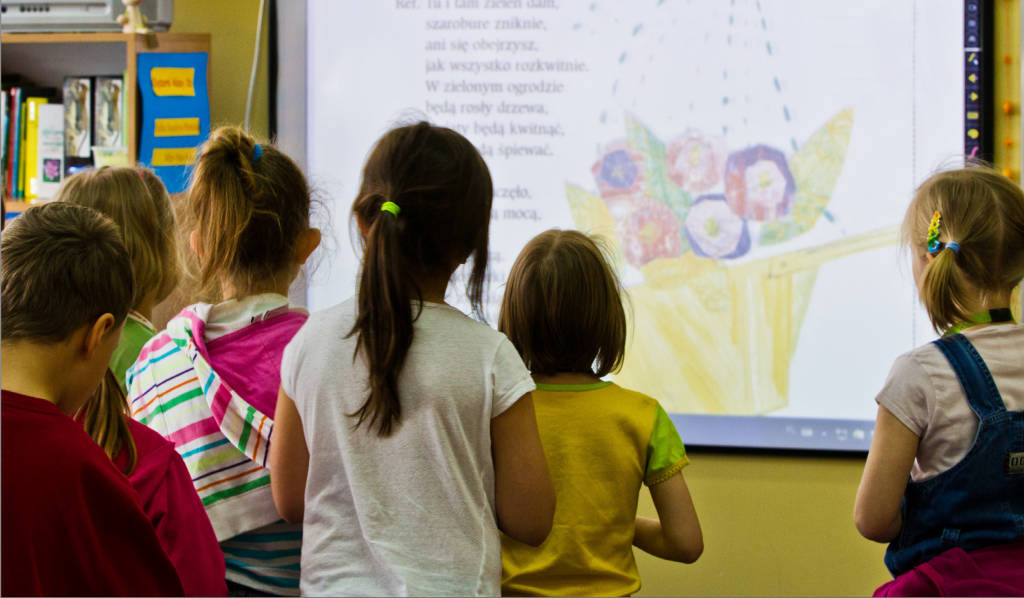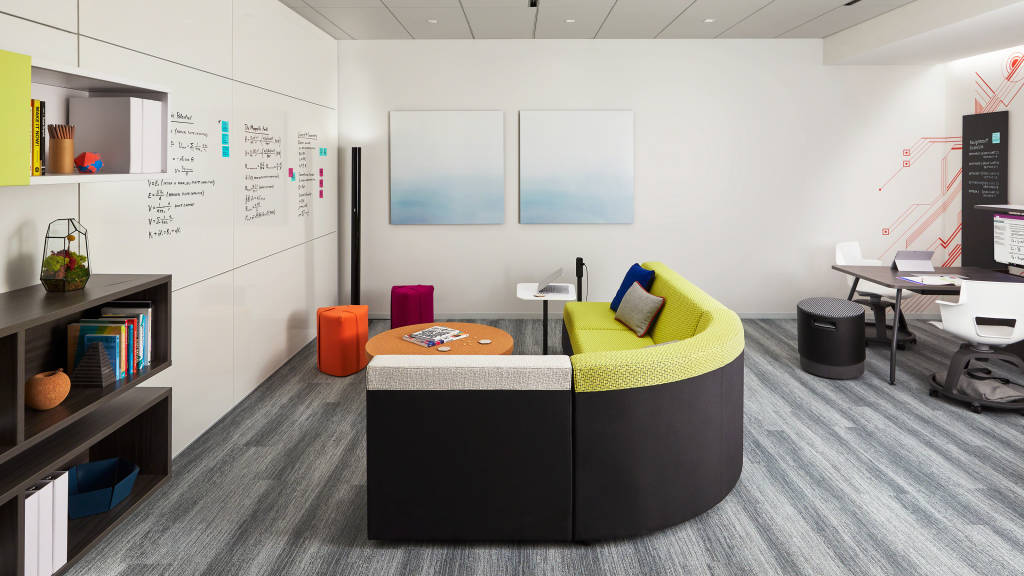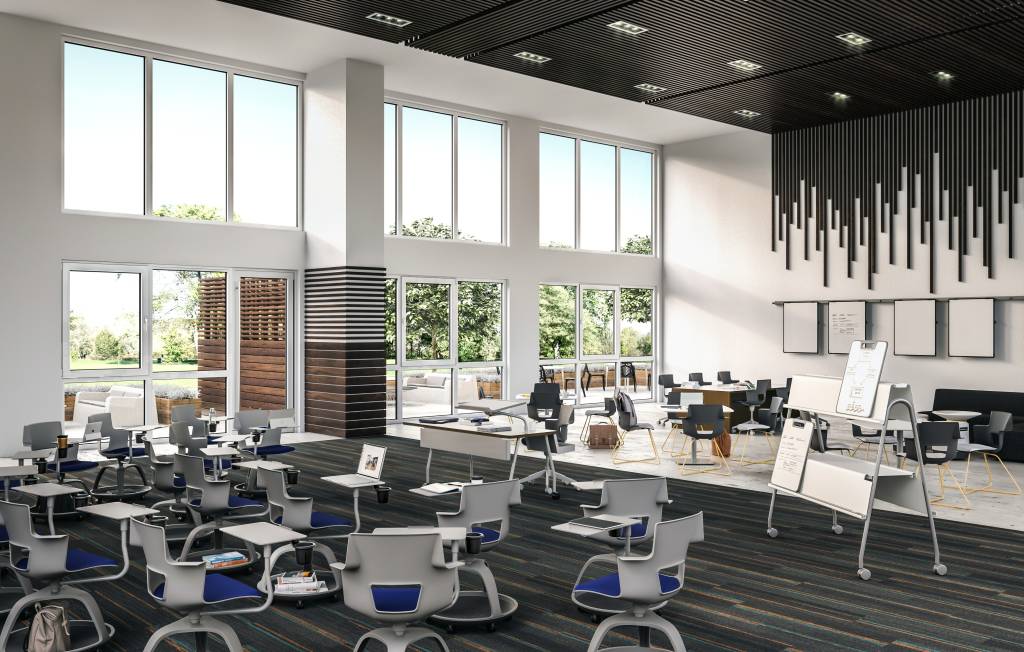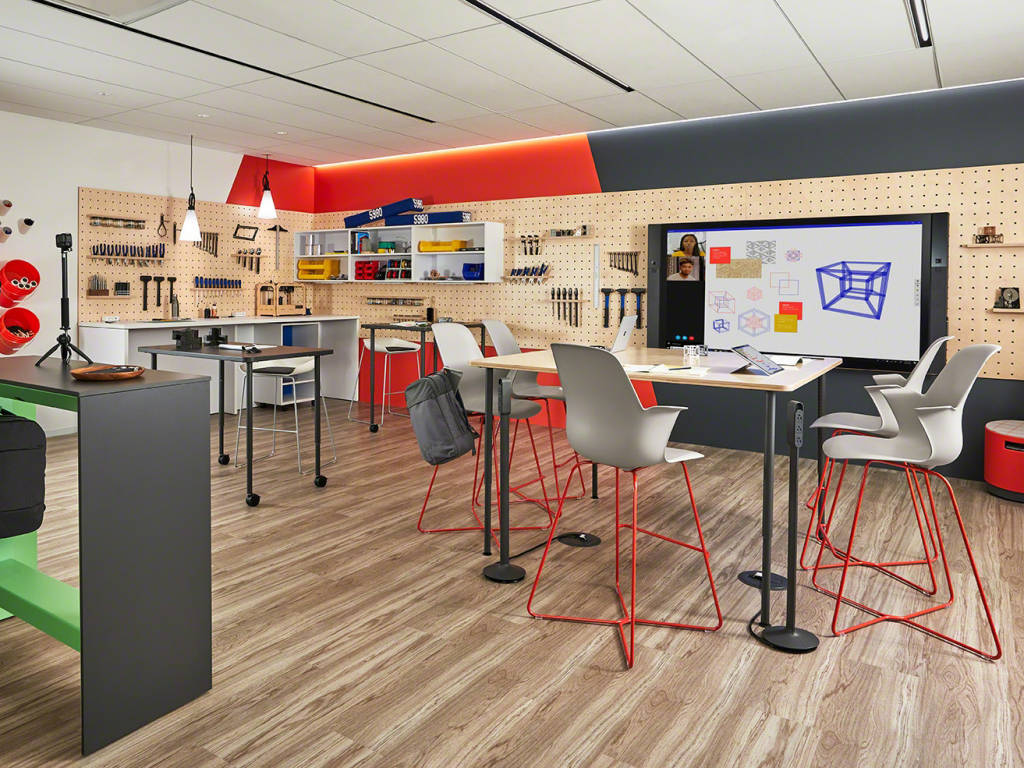Guide to Personalized Learning Experiences
The qualities of the environments that supported personalized learning shared spatial characteristics akin to art galleries, playgrounds, workplaces, and homes. These four types of spaces are good metaphors for thinking about personalized learning spaces.
Art Gallery
Art galleries can inspire, provoke, educate, and invite public comment. Displaying student projects and written reflections in a gallery format is a tangible way for students to share their learning journeys and encourages peers, educators and community members to participate, comment and reflect on the learning process. In many personalized learning experiences, the student’s have agency to determine what artifacts are displayed, lending a degree of creativity and vibrancy to every nook and cranny of the classroom or school.

Home
Think of the way families relax in a living or family room. Soft lighting, comfortable, upholstered couches and chairs, and a mix of textures and objects (like a favorite photo or books on display, or warm, cozy blanket) all combine to create a welcoming, comfortable environment. Or picture how visitors always congregate in a kitchen at someone’s home, hanging around a kitchen table (or near the snacks!). Bringing elements that resemble the best parts of home, from lounge seating to groupings of tables and chairs to individual getaway spaces, can create home-like personalized learning environments that students feel ownership over.

Workplace
School, however, is not all relaxing and hanging out. In fact, it’s very much like a job. So, like professional knowledge workers in an office setting, students should be able to choose the mode of work that best meets their needs, whether that’s working independently, collaborating, meeting one-on-one or in small groups. Thinking of the classroom or campus like a professional working environment can create an ecosystem of spaces — from assigned workspaces to project rooms, from open collaboration areas to private offices — that supports a variety of work modes.

Playground
A playground isn’t just a place for loud, fun expression, it’s also a place for students to explore, discover and use their imagination. A playground encourages possibility without dictating what students should do. Playground elements are a key component to personalized learning environments. Providing multi-sensory learning spaces with lots of choices of materials, tool and resources to leverage, encourages students to physically, cognitively and emotionally engage in self-discovery and natural curiosity of learning. Rooms like makerspaces, STEM labs and design labs, provide playground-like qualities for students.

NEXT CHAPTER – Personalized Learning and You
PREVIOUS CHAPTER – Students
